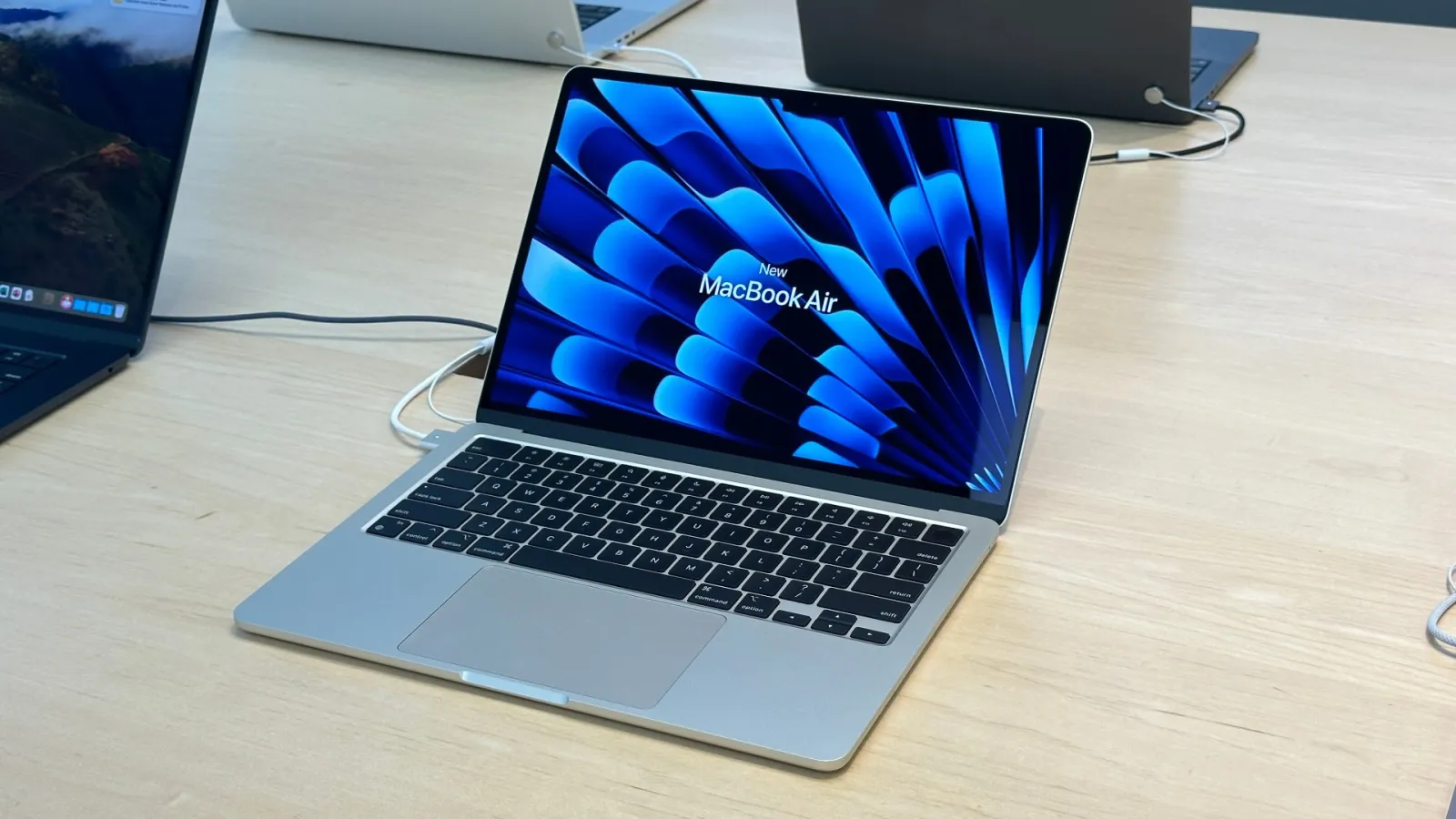In the ever-evolving world of technology, where the thirst for faster, more efficient devices is unquenchable, Apple has once again risen to the occasion with its latest iteration of the MacBook Air M3, equipped with the latest M3 chip. This new model is not just another update; it’s a significant leap forward, addressing past criticisms head-on and setting a new benchmark for what users can expect from a premium lightweight laptop.

Apple Corrects Course with the MacBook Air M3
The MacBook Air has long been a favorite among professionals and creatives alike for its sleek design, portability, and reliable performance. However, the transition to the M2 chip brought with it a contentious change: a slowdown in the base model’s storage speeds due to a shift in SSD architecture.
This decision was met with disappointment, as enthusiasts noticed a marked departure from the expected performance standards set by previous models.
Enter the MacBook Air M3. Reports, including a notable one from GregsGadgets on X (formerly Twitter), highlight a welcome reversal from Apple. The base model of the MacBook Air M3, with its 256GB SSD, now boasts faster storage speeds, realigning with the performance seen in the M1 models.
This adjustment comes after Apple’s controversial decision to use a single 256GB NAND module in the M2, which significantly slowed down storage speeds. A teardown by Max Tech confirmed Apple’s return to a dual NAND chip setup in the entry-level M3 model, thereby restoring the SSD’s read and write speeds to their former glory.
Macbook Air M3 refresh is live
– Faster chip
– Faster Wifi
– Support for 2 external displays
– Still 8/256GB base
– Same design/battery life– M2 Macbook Air drops by $100
– M1 Macbook Air discontinuedhttps://t.co/5nNOG1YMu6 pic.twitter.com/ofMGUKFonJ— Marques Brownlee (@MKBHD) March 4, 2024
The Technical Rationale and User Impact
The technical community understands well why this change matters: SSD performance is not just about storage capacity; it’s about how quickly and efficiently data can be accessed and written. The dual NAND setup allows for parallel processing, significantly enhancing the performance compared to the single-chip design.
This decision by Apple not only corrects a previously criticized move but also demonstrates the company’s responsiveness to consumer feedback and its commitment to delivering superior products.
Moreover, Apple has expanded the MacBook Air M3’s capabilities in terms of external display support. Users can now connect two monitors to the device, a significant upgrade from its predecessor’s limitation to a single external display.
This improvement, however, comes with a caveat: when both external monitors are in use, the MacBook Air’s own display must be disabled, a minor compromise for a major gain in productivity potential.

A Nudge Toward Higher Specifications
Discussion around the MacBook Air M3 has also touched upon its base model specification of 8GB of system RAM. In today’s demanding tech landscape, this amount is beginning to feel insufficient for a range of tasks, leading to calls for a standard increase to 16GB.
While users have the option to upgrade, the cost implication raises eyebrows, hinting at a strategic push towards higher-priced configurations.
A Step Forward, with Room to Grow
Despite these debates, it’s clear that the MacBook Air M3 is a formidable entry into the market, receiving high praise for its overall performance and enhanced features. Reviews of both the 15-inch and 13-inch models have been overwhelmingly positive, underlining the device’s status as an exceptional laptop.
Apple’s willingness to address past shortcomings and innovate further solidifies its position at the forefront of the tech industry.
As we look to the future, the MacBook Air M3 represents not just a solution to previous criticisms but a vision of what laptops can and should be. Its improved SSD speeds, enhanced display support, and overall performance set a new standard, one that will undoubtedly influence future designs both within Apple and across the tech landscape.










